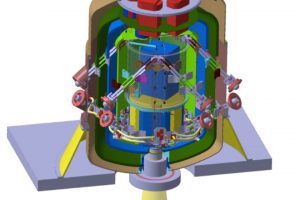Testing X-IFU performances. Published on SPIE: “Testing the X-IFU calibration requirements: an example for quantum efficiency and energy resolution” of E. Cucchetti (IRAP, CNRS, Universite’ de Toulouse)

of Mario Giuseppe Guarcello ( follow mguarce)
In the past ten years the X-ray Universe has been explored mainly by two telescopes: the NASA satellite Chandra and the ESA satellite XMM-Newton. These two telescopes are still operating efficiently. However, the scientific community has already started planning the next generation of instruments for X-ray astronomy. In Europe, the future in this field is the Advanced Telescope for High ENergy Astrophysics (ATHENA), selected by the European Space Agency as the second “Large” mission in its Cosmic Vision, with predicted launch on the early 2030.
ATHENA eyes will observe compact objects, clusters of galaxies, Solar System bodies, X-ray active stars, star forming regions, X-ray binaries, etc… ATHENA will be equipped with a large and innovative mirror based on the Silicon Pore Optics technology and two instruments: X-IFU (X-ray Integral Field Unit) an array of microcalorimeters sensitive to photons with energy in the 0.2-12 keV range, with a field of view of 5 arc minutes diameter, a spatial resolution of 5″ and an energy resolution of 2.5 eV at 7 keV; and WFI (Wide Field Imager) an array of DepFET active pixels sensitive to photons in the 0.2-15 keV energy range, with a field of view of 40 arc minutes ×40 arc minutes, angular resolution of 5″ and energy resolution of 140 eV at 7 keV.
In this phase of mission development, it is important to test the instruments performance and their calibration needs. If there are not optimal, in fact, the final data may be affected by systematic errors that may impact the science objectives of the mission. In the study: “Testing the X-IFU calibration requirements: an example for quantum efficiency and energy resolution” of E. Cucchetti (IRAP, CNRS, Universite’ de Toulouse), which has been recently published by SPIE, the authors have developed a simulation tool which allows to estimate systematic errors related to uncertainties in the instrumental response (e.g., filters transmission, detector response). The final result is quite encouraging: thanks to the design of the instrument, these errors should be second-order effects at single-pixel level, and even further minimised by binning pixels. The astronomer M. Barbera of the University of Palermo and Astronomical Observatory is one of the coauthors of the study.
The figure (link) shows the mechanical design of X-IFU.
